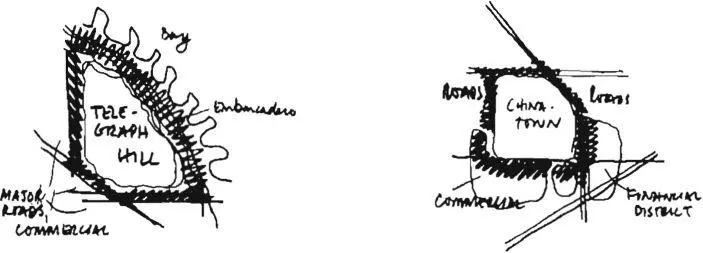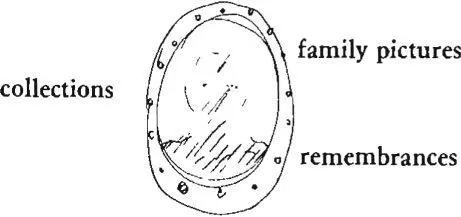Christopher alexander - A pattern language
Здесь есть возможность читать онлайн «Christopher alexander - A pattern language» весь текст электронной книги совершенно бесплатно (целиком полную версию без сокращений). В некоторых случаях можно слушать аудио, скачать через торрент в формате fb2 и присутствует краткое содержание. Жанр: Прочая научная литература, на английском языке. Описание произведения, (предисловие) а так же отзывы посетителей доступны на портале библиотеки ЛибКат.
- Название:A pattern language
- Автор:
- Жанр:
- Год:неизвестен
- ISBN:нет данных
- Рейтинг книги:3 / 5. Голосов: 1
-
Избранное:Добавить в избранное
- Отзывы:
-
Ваша оценка:
- 60
- 1
- 2
- 3
- 4
- 5
A pattern language: краткое содержание, описание и аннотация
Предлагаем к чтению аннотацию, описание, краткое содержание или предисловие (зависит от того, что написал сам автор книги «A pattern language»). Если вы не нашли необходимую информацию о книге — напишите в комментариях, мы постараемся отыскать её.
A pattern language — читать онлайн бесплатно полную книгу (весь текст) целиком
Ниже представлен текст книги, разбитый по страницам. Система сохранения места последней прочитанной страницы, позволяет с удобством читать онлайн бесплатно книгу «A pattern language», без необходимости каждый раз заново искать на чём Вы остановились. Поставьте закладку, и сможете в любой момент перейти на страницу, на которой закончили чтение.
Интервал:
Закладка:
There is another kind of empirical observation which supports this last statement. If we look around a metropolitan area, and pinpoint the strongly differentiated subcultures, those with character, we shall always find that they are near boundaries and hardly ever close to other communities. For example, in San Francisco the two most distinctive areas are Telegraph Hill and Chinatown. Telegraph Hill is surrounded on two sides by the docks. Chinatown is bounded on two sides by the city’s banking area. The same is true in the larger Bay Area. Point Richmond and Sausalito,
 |
| Subculture boundaries. |
CONSTRUCTION
the stones—mandalas, dream images, preoccupations—and he tells us that the room came gradually to be a living thing to him—the outward counterpart to his unconscious.
Examples we know: A motel run by a Frenchman, mementos of the Resistance all around the lounge, the letter from Charles de Gaulle. An outdoor market on the highway, where the proprietor has mounted his collection of old bottles all over the walls; hundreds of bottles, all shapes and colors; some of them are down for cleaning; there is an especially beautiful one up at the counter by the cash register. An anarchist runs the hot dog stand, he plasters the walls with literature, proclamations, manifestoes against the State.
A hunting glove, a blind man’s cane, the collar of a favorite dog, a panel of pressed flowers from the time when we were children, oval pictures of grandma, a candlestick, the dust from a volcano carefully kept in a bottle, a picture from the news of prison convicts at Attica in charge of the prison, not knowing that they were about to die, an old photo, the wind blowing in the grass and a church steeple in the distance, spiked sea shells with the hum of the sea still in them.
Therefore:
 |
| old adventures |
Do not be tricked into believing that modern decor must be slick or psychedelic, or “natural” or “modern art,” or “plants” or anything else that current taste-makers claim. It is most beautiful when it comes straight from your life —the things you care for, the things that tell your story.
v d-1166
ACKNOWLEDGMENTS
We have had a great deal of help and support over the eight years it has taken us to conceive and create this work. And we should here like to express our feelings of gratitude to everyone who helped us.
The Center has always been a small workgroup, fluctuating in size from 3 to 8, according to the demands of the work. Since the Center was incorporated in 1967, a number of people have worked with us, for different lengths of time, and helped in many ways. Denny Abrams was financial manager of the Center for three years. He played a critical role in the early days of the Center, helping to shape our nature as a work group. He also helped with layout and photographic experiments in the early drafts of the book and worked with us on the Oregon experiment. Ron Walkey spent two years at the Center, and helped especially to develop the patterns and the overall conception of the city portrayed in the first section of the book. The two of them were very close to the development of the pattern language, from the beginning; and above all, their music, after lunch, made unforgettable times together for all of us.
In more general terms, both Sim Van der Ryn and Roslyn Lindheim gave us help and encouragement when we first began the project, years ago. Christie Coffin, Jim Jones, and Barbara Schreiner all helped us develop the contents of the earliest versions of the language.
1167
ACKNOWLEDGMENTS
Jim Axley helped more than anyone on the very difficult development of the structural patterns, in the last part of the language. And earlier, Sandy Hirshen, collaborating with us during the Peru project, had begun to develop our attitude to construction techniques.
Harlean Richardson has worked tremendously hard on the detailed design of the book itself. And we have had wonderful secretarial help over the years from Helen Green, who typed many many versions of the patterns, and from Mary Louise Rogers who helped in many ways coordinating the work and providing support.
Another invaluable kind of help we have had was that given by people who believed in what we were trying to do, gave us an opportunity to work on it, and to do projects for them which incorporated these ideas. Ken Simmons, who allowed us to develop our very first pattern language in a professional job, Johannes Olivegren, John Eberhard, Bob Harris, Don Conway, Fried Wittman, Hewitt Ryan, and Edgar Kaufmann all helped us in this way. What they gave us in confidence, and emotional support, and friendship, and, often, in money that supported the work, cannot be counted.
Even more specifically, we want to thank Dick Wakefield, Coryl Jones, and Clyde Dorsett at the National Institute for Mental Health. The evolution of the pattern language was supported for the four most important years by a sequence of grants from the Center for the Study of Metropolitan Problems of the National Institute for Mental Health—and it would have been quite impossible for us to do the work if it had not been for those grants.
Finally, we owe a great deal to Oxford University Press, especially to James Raimes, our editor, who first
1 16 8
ACKNOWLEDGMENTS
agreed to try and publish all three books, in a series, and also to James Huws-Davies and Byron Hollinshead. All three of them supported the publication of this book, and the other books, before they had even seen them: and once again, gave us enormous energy to do the work, by putting their confidence in us at a time when we badly needed it. During the production of the book, we have often created severe difficulties for Oxford; but they have stood by us throughout.
It is only because all of our friends have helped us as they did that it has actually been possible.
1169
t
PHOTO ACKNOWLEDGMENTS
Many of the pictures we have selected for this book come from secondary and tertiary sources. In every case we have tried to locate the original photographer and make the appropriate acknowledgment. In some cases., however, the sources are too obscure, and we have simply been unable to track them down. In these cases, we regret that our acknowledgments are incomplete and hope that we have not offended anyone.
| 10 | H. Armstrong Roberts | 174 | Gilbert H. Grosvenor |
| 16 | Andreas Feininger | 192 | Edwin Smith |
| 26 | Emil Egli and | 222 | Martin Hurlimann |
| Hans Richard Muller | 231 | Andre George | |
| 29 | Clifford Yeich | 236 | Martin Hurlimann |
| 33 | Gutkind | 266 | Anne-Marie Rubin |
| 3 6 | Claude Monet | 276 | Marc Foucalt |
| 51 | Henri Cartier-Bresson | 28^ | Ivy De Wolfe |
| 58 | Walter Sanders | 285 | R. Blijstra |
| 70 | Herman Kreider | 298 | Henri Cartier-Bresson |
| 80 | Sam Falk | 3 01 | Andre George |
| 99 | Joanne Leonard | 3°4 | V. S. Pritchett |
| !3 J | Edward Weston | 3i5 | Henri Cartier-Bresson |
| J35 | Iain Macmillan | 3i9 | Henri Cartier-Bresson |
| 139 | Fred Plaut | 322 | Iain Macmillan |
| 168 | Bernard Rudofsky | 353 | Martin Hurlimann |
| 1170 |
| 376 | Ken Heyman | 737 | Orhan Ozguner |
| Co00Or | Robert Doisneau | 740 | Marian O. Hooker |
| 389 | Edwin Smith | 746 | Erik Lundberg |
| 412 | Alfred Eisenstaedt | 769 | Henri Cartier-Bresson |
| 43 6 | Andre Kertesz | 794 | Berthe Morisot |
| 444 | Ralph Crane | 805 | A. F. Sieveking |
| 45i | Eugene Atget | 822 | R. Rodale |
| 454 | V. S. Pritchett | 857 | C. H. Baer |
| 457 | Andre Kertesz | 872 | Pierre Bonnard |
| 473 | Charles E. Rotkin | 876 | G. Nagel |
| 49 2 | Bernard Rudofsky | 889 | Henri Matisse |
| CnOCO | Wu Pin | 897 | Dorothy and |
| 524 | Tonk Schneiders | Richard Pratt | |
| 531 | Eugene Atget | 962 | Alan Fletcher |
| 540 | Erik Lundberg | 970 | Erik Lundberg |
| 569 | Martin Hurlimann | 989 | Clifford Yeich |
| 580 | Bernard Rudofsky | 1027 | Erik Lundberg |
| OnOOUr | Francois Enaud | 1046 | Carl Anthony |
| 589 | Bernard Rudofsky | 1050 | Winslow Homer |
| 596 | Herbert Hagemann | 1053 | Edwin Smith |
| 599 | Lazzardo Donati | 1056 | Avraham Wachman |
| 641 | Pierre Bonnard | 1064 | Ivy De Wolfe |
| 651 | Russell Lee | 1088 | Bruno Taut |
| 656 | Joanne Leonard | 1105 | Izis Bidermanas |
| 664 | Joanne Leonard | 1118 | Andre Kertesz |
| 696 | Ken Heyman | 1121 | Pfister |
| 707 | Dorien Leigh | 1128 | Roderick Cameron |
| 729 | Ernest Rathnau | 1135 | Marc Foucault |
| 733 | Aniela Jaffe | 1164 | J. Szarhouski |
I I 71
Читать дальшеИнтервал:
Закладка:
Похожие книги на «A pattern language»
Представляем Вашему вниманию похожие книги на «A pattern language» списком для выбора. Мы отобрали схожую по названию и смыслу литературу в надежде предоставить читателям больше вариантов отыскать новые, интересные, ещё непрочитанные произведения.
Обсуждение, отзывы о книге «A pattern language» и просто собственные мнения читателей. Оставьте ваши комментарии, напишите, что Вы думаете о произведении, его смысле или главных героях. Укажите что конкретно понравилось, а что нет, и почему Вы так считаете.












